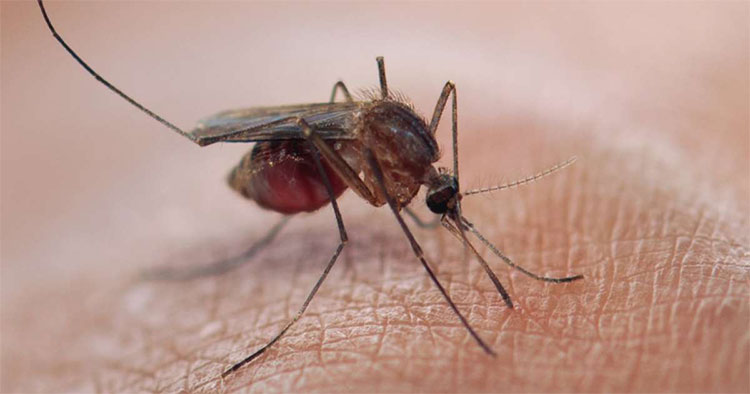Special mosquito repellent clothing made from graphene metamaterial
This finding is important because it also helps prevent the spread of deadly diseases like malaria.
Magically realistic graphene material over the last time has received significant attention for its potential applications in everything from solar cells to tennis rackets.
But a new study by researchers at Brown University has shown that multilayer graphene has even more special effects that can provide twice the 'defense' that helps fight mosquito bites.

Clothing incorporating graphene metamaterials will help fight future mosquito bites.
This ultra-thin but powerful material acts as a physical barrier that mosquitoes cannot bite through. At the same time, experiments show that graphene blocks the chemical signals in sweat that mosquitoes use to sense that blood 'meals' are approaching, reducing their urge to bite humans.
Nearly half of the world's population is at risk of transmitting malaria with an estimated 44,000 deaths in 2016.
"Mosquitoes are an important infectious channel for disease worldwide and have a lot of interest in combating chemical-free mosquito bites , " said Robert Hurt, professor at Brown School of Technology, author of the study. to speak.
To test the superiority of the new material, the researchers recruited several brave participants who were willing to accept some mosquito bites. Participants will place their arms in a barn filled with mosquitoes so that only a small piece of skin is available for mosquito bites.
In laboratory tests, patches of skin covered with graphene membranes were not bitten, while mosquitoes easily attacked on unprotected skin.
The researchers compared the number of participants getting bites on their bare skin and on skin covered with a thin cloth, on skin covered with a layer of graphene oxide (GO) wrapped in thin cloth.
The researchers were surprised to find that the mosquitoes completely changed their behavior with the presence of graphene-covered arms.
When the skin was covered with a dry GO membrane, the participants were not burned at all, while bare skin and thin cloth were easily attacked.
Cintia Castilho, a Brown University graduate student and lead author of the study, said: "With graphene, mosquitoes don't even land on skin patches, they don't seem to care. We think graphene will is a physical barrier to bites, through puncture resistance, but when we see these experiments, we begin to think that there is also a chemical barrier that prevents mosquitoes from perceiving someone. over there'.
To confirm the idea of a chemical barrier, the researchers dipped some human sweat on the graphene fence. This causes mosquitoes to drop patches in the same way they fly to bare skin.
Further tests showed that GO was punctured by mosquito bites but only when dry. But it's not easy at all and researchers are now trying to find a way to stabilize GO so it is stiffer when wet.
"Our preferred approach to this technology would be to find a way to stabilize GO mechanically so it stays strong when wet. This next step will give us the full benefit of stain protection. bite ' , the researchers said.
- The reason for mosquito repellent is spiral, you will not expect ...
- Find an effective and inexpensive mosquito repellent
- Mosquito watch
- 8 types of plants easy to grow that make mosquitoes' terrified
- 7 misconceptions about mosquito prevention: It turns out that citronella cultivation can be counterproductive
- Only with this special bracelet will you no longer have to worry about mosquito bites!
- The 9th grade student invented a mosquito repellent from tea residue
- Using mosquito bats and insecticides at the same time can cause explosion
- Graphene is not human and environmental friendly
- Air conditioner cum chasing mosquitoes
- Detecting 'invisibility cloak' against mosquitoes
- Notes when spraying insecticide to kill dengue
 The US company is about to build a supersonic passenger plane of 6,000km / h
The US company is about to build a supersonic passenger plane of 6,000km / h Japan develops avatar robot as in fiction film
Japan develops avatar robot as in fiction film Australia tested the world's first mango picking robot
Australia tested the world's first mango picking robot America develops technology to separate water from animal waste
America develops technology to separate water from animal waste